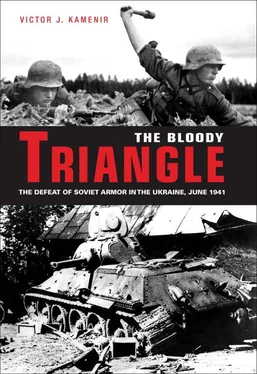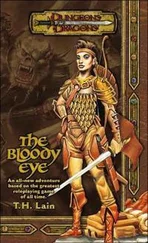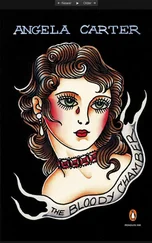A typical German panzer entering Soviet Union in 1941 numbered just short of fourteen thousand men, roughly 150 tanks, 50 cannons, and howitzers ranging from 75mm to 150mm, and 30 81mm mortars. These heavy weapons were supplemented by 42 37mm and 9 47mm or 50mm antitank guns, virtually noneffective against the new and heavy Soviet tanks, but plenty deadly to older and lighter models. In addition to field artillery, each German tank division possessed 12 20mm flak guns and 8 to 12 88mm guns. Adding to the deadly cocktail were the heavy artillery and self-propelled assault gun battalions, belonging at the corps level and distributed to individual divisions in mission-oriented battery packages.
While panzers received the lion’s share of glory, the mainstay of the German army remained infantry, some motorized, but overwhelmingly regular, of a foot-slogging, gravel-agitating variety. Motorized infantry divisions, although lacking tanks, had the same number of combat battalions, six, as a panzer division, also with roughly fourteen thousand men, while regular infantry division numbered over sixteen thousand men with nine infantry battalions. However, both motorized and regular infantry divisions possessed stronger artillery than their panzer brethren. While the motorized divisions had roughly the same numbers of guns as panzer ones, they were of heavier calibers. The regular infantry divisions, on the other hand, had an additional twelve-gun 105mm battery.
Despite being regularly portrayed as a mechanized force par excellance , the German army brought 625,000 horses with it into the Soviet Union in 1941, more than Napoleon did in 1812. Equally difficult was the situation with wheeled transport. While a shortage of wheeled vehicles before the opening of the campaign was partially made good by captured or commandeered French trucks, their suspensions, developed for well-maintained European highways, did not last long on the rutted roads of the western Soviet Union. While the bulk of the German army marched on foot, almost all of its artillery was horse-drawn, and the typical Landser of 1941 did not look much different from his father in 1914. Still, a significant advantage that German troops enjoyed over their Soviet counterparts was the fact that they were at almost full manning levels, were well-provisioned and superbly trained, and experienced and enjoyed inspiring and confident leadership.
 CHAPTER 2
CHAPTER 2
Soviet Military on the Eve of War
STARTING IN THE LATE 1930s, the Soviet military experienced dramatic growth. Its numbers rose from over 1.5 million men in 1937 to 5.2 million by June 22, 1941, a more than three-fold increase. However, this drastic increase in quantity was not paralleled by an increase in quality. This dilution of fighting capability can be underscored by taking a closer look at the prewar Soviet officer corps.
By 1936 Stalin’s bloody hand had already raked through the Communist Party and the country’s administrative apparatus. Concerned with “Bonapartism,” the fear of a charismatic military leader arising to lead a successful challenge to his authority, Stalin turned his jaundiced eye towards the military.
Marshal Mikhail N. Tukhachevskiy was one of the earliest and the most prominent victims of military purges. Implicated along with Tukhachevskiy, many other officers connected to him socially or professionally were swept away. Unfortunately for the Soviet armored forces, many of its proponents were found among Tukhachevskiy’s circle of friends and colleagues and perished along with him. Not only the theoreticians of tank warfare were affected. In a wave of paranoia seeing saboteurs and enemies everywhere, access of enlisted Soviet tankers to their machines was severely restricted to minimize or prevent them from damaging their equipment and stealing parts and supplies. [1] Habek, 264.
The men swept up by the purges were normally dubbed “enemies of the people.” Their arrests were regularly followed by arrests of their wives, siblings, friends, and adult children. Minor children were generally placed into state orphanages. Elderly parents were often turned out of their homes without means to support themselves. An arrest of one man created expanding ripples of arrests among people associated with him, in turn creating more waves of arrests.
Marshal of the Soviet Union Georgiy K. Zhukov was later to describe the atmosphere of fear in the country:
The Soviet people and [Communist] Party had to pay a heavy price for the unprincipled suspicion of the political leadership of the country, headed by J. V. Stalin. Horrible situation existed in the country. Nobody trusted anybody, people became afraid of each other, avoided meetings and any conversation, and if such were necessary—attempted to talk with a third party present as witnesses. An epidemic of false denouncements unfolded. Often crystal-clear honest people were falsely denounced, sometimes among close friends. All this was done out of fear to be suspected of disloyalty. This horrible situation continued getting worse.
The Soviet people, from young to old, could not comprehend what was happening, why the arrests among our people were so wide-spread. Not only [Communist] Party members, but even non-party affiliated people, with incomprehension and internal doubt, watched the rising tide of arrests and, of course, nobody could openly voice their incomprehension, their doubt that those arrested were indeed involved in any anti-Soviet activity or membership in counter-revolutionary organizations. Every honest man, going to bed, could not be sure that he would not be taken that same night under some false denouncement.” [2] Zhukov, 220.
Unfortunately, human nature being weak, false accusations were often used to settle scores or to clear an avenue for advancement. General Grigorenko made a somewhat generalized observation: “Those who were crude and of limited intelligence seemed to avoid being purged. Those destroyed were mainly cultured, tactful, thoughtful people.” [3] Grigorenko, 59.
In his memoirs, Zhukov described his own close brush with the deadly menace of the purges in 1937. Danilo Serdich, commander of III Cavalry Corps, in which Zhukov commanded a cavalry division, was arrested. Upon Zhukov’s arrival at corps’ headquarters in Minsk, he was met by F. I. Golikov, commissar of the Belarusian Military District. This district just had its commander and Golikov’s predecessor arrested. Golikov presented Zhukov with a report by commissar of III Cavalry Corps Nikolai Yung, full of false accusations, including a charge that Zhukov’s wife baptized their daughter Ella in church. He also grilled Zhukov about his associations with officers already arrested. The hot-blooded Zhukov was ready to explode, with quite possibly deadly consequences for himself. This scene was interrupted by acting commander of Belarusian Military District V. M. Mulin. He calmed Zhukov down and sent him back to his division. Zhukov spent two very uncomfortable months waiting for the outcome of his confrontation with Commissar Golikov. When he was finally appointed to command the III Cavalry Corps, he found out that his accuser, Yung himself, was arrested.
By then, Zhukov’s new command was in shambles:
Two weeks later I managed to familiarize myself in detail with situation in all the subunits of the [III Cavalry] Corps and, unfortunately, had to admit that majority of units, due to arrests, suffered severe drop in combat and political readiness of command and political personnel, accountability lowered and, as follows, discipline and service of all personnel weakened. [4] Zhukov, 224.
Besides sheer numerical losses of experienced and capable men, the pool of knowledge that was lost was staggering. A prime example of this was the General Staff Academy. The disgraced Marshal Tukhachevskiy was a great proponent of this institution and personally selected many talented military educators and theoreticians to staff the faculty at the academy. After the fall of Tukhachevskiy, a wave of arrests swept through the General Staff Academy in late 1936 and 1937, decimating the faculty.
Читать дальше

 CHAPTER 2
CHAPTER 2



![О Генри - Социальный треугольник [The Social Triangle]](/books/405340/o-genri-socialnyj-treugolnik-the-social-triangl-thumb.webp)






